The city of Bukhara is one of the highlights of the historic Silk Road that linked Europe with Asia. The trade routes passed through Central Asia, and Bukhara was one of the most important cities on the route through present-day Uzbekistan. To this day you can enjoy a lot of the Silk Road history in the magnificent sights in the city center.
Bukhara is located in the middle of the desert, and out of almost nowhere a beautiful city rises, where some of the world’s most beautiful Islamic buildings can be seen. The silhouette consists of not least the Kalyan Minaret as a landmark with a number of the distinctive light blue domes surrounding it. The domes and other architectural highlights of the city are mainly religious works such as mosques, minarets and madrasas.
Bukhara Ark is an amazing building from the historical time when Bukhara’s emir ruled the city and the emirate of the area. The Ark was the political center, while the religious center is close by in the form of the Kalyan Minaret complex as the centerpiece.
Bukhara is also the city of caravans, and it shows itself in the city’s shopping center, where the many domed historical shopping centers and inns continue to stand where the present-day commercial streets meet. Silk, jewelery, spices and much more were traded in these halls, which continue to function as arcades. There are also numerous caravansarais, which offered accommodation for the caravans. Many of these are today workshops and restaurants.
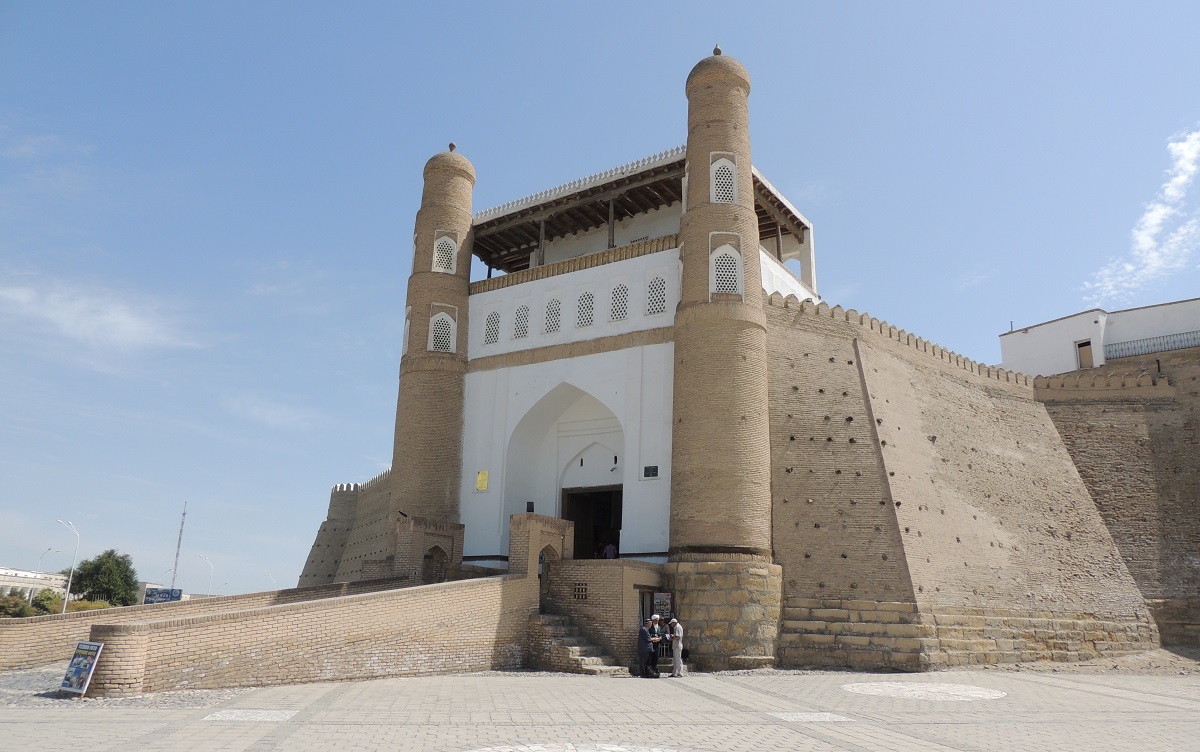

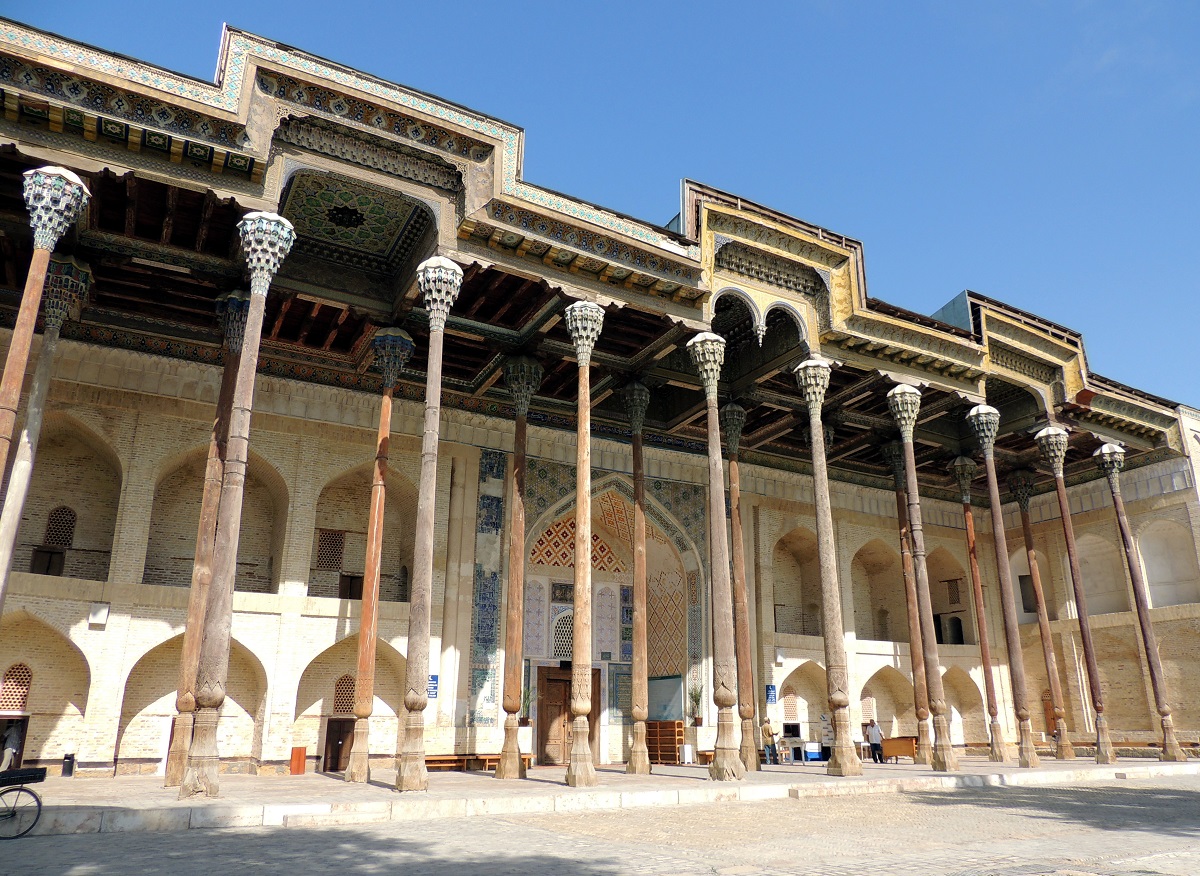



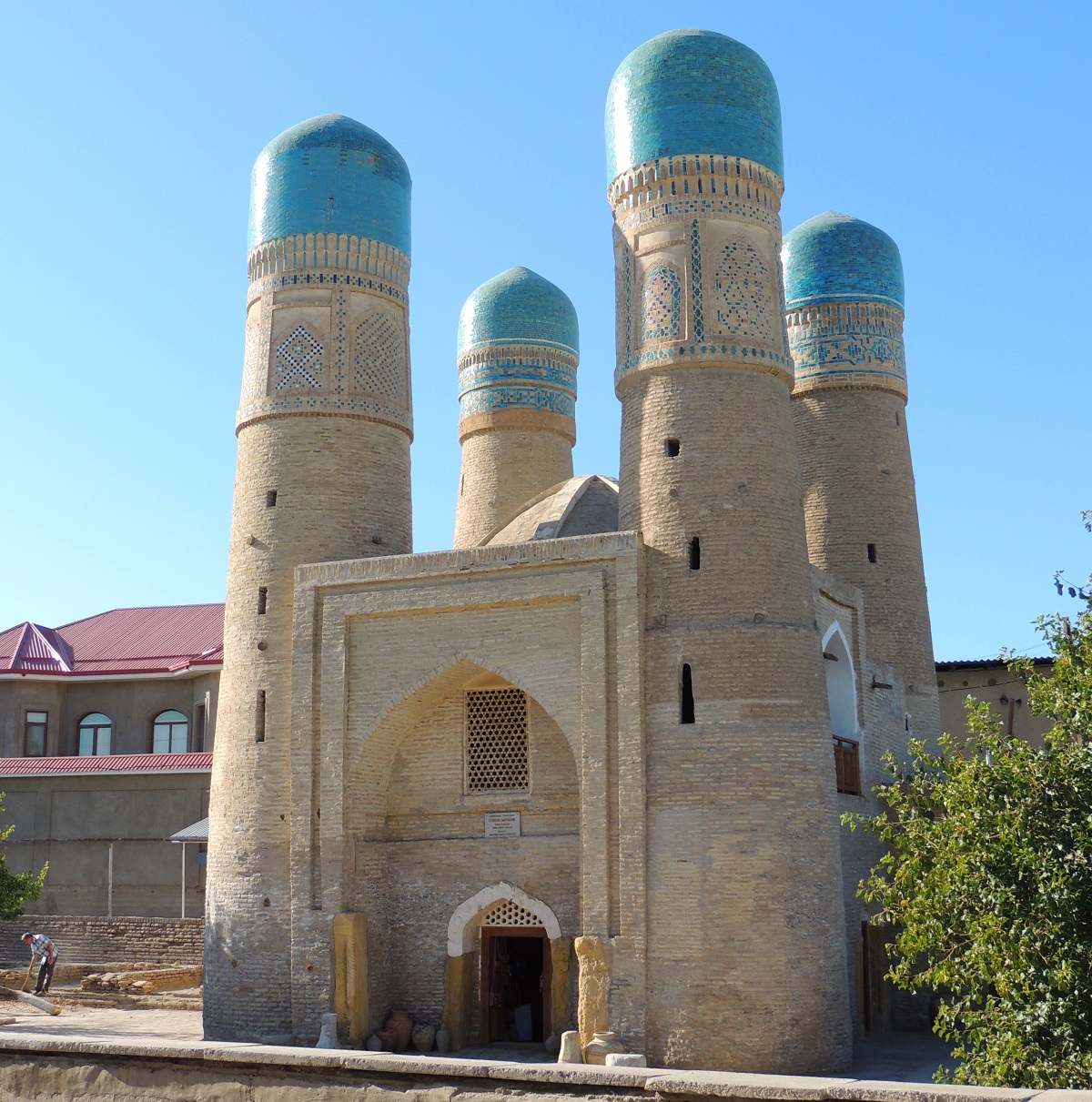

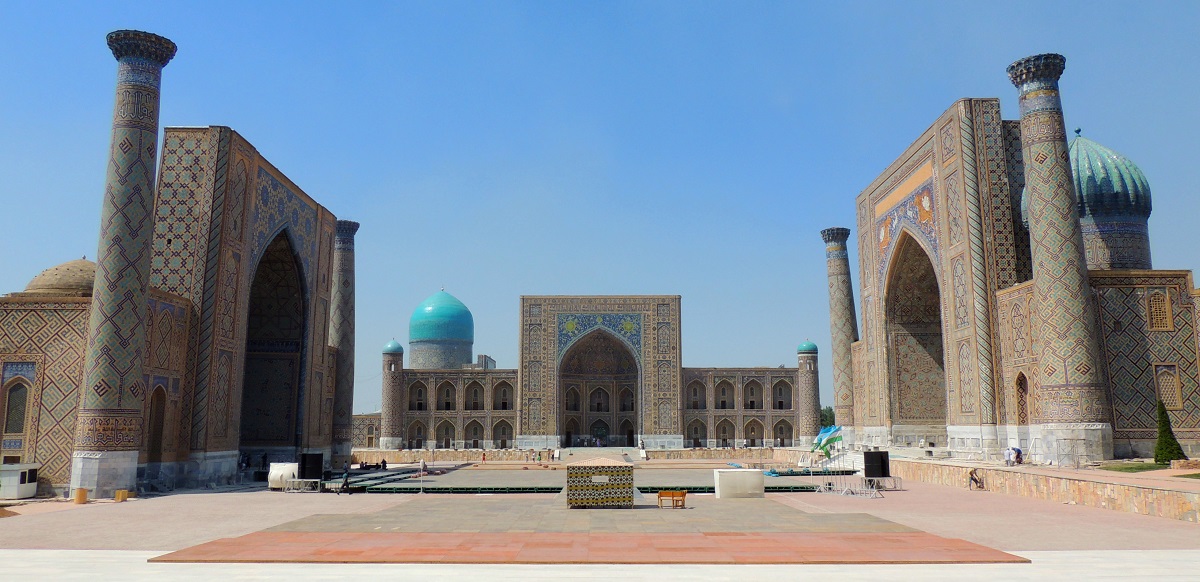
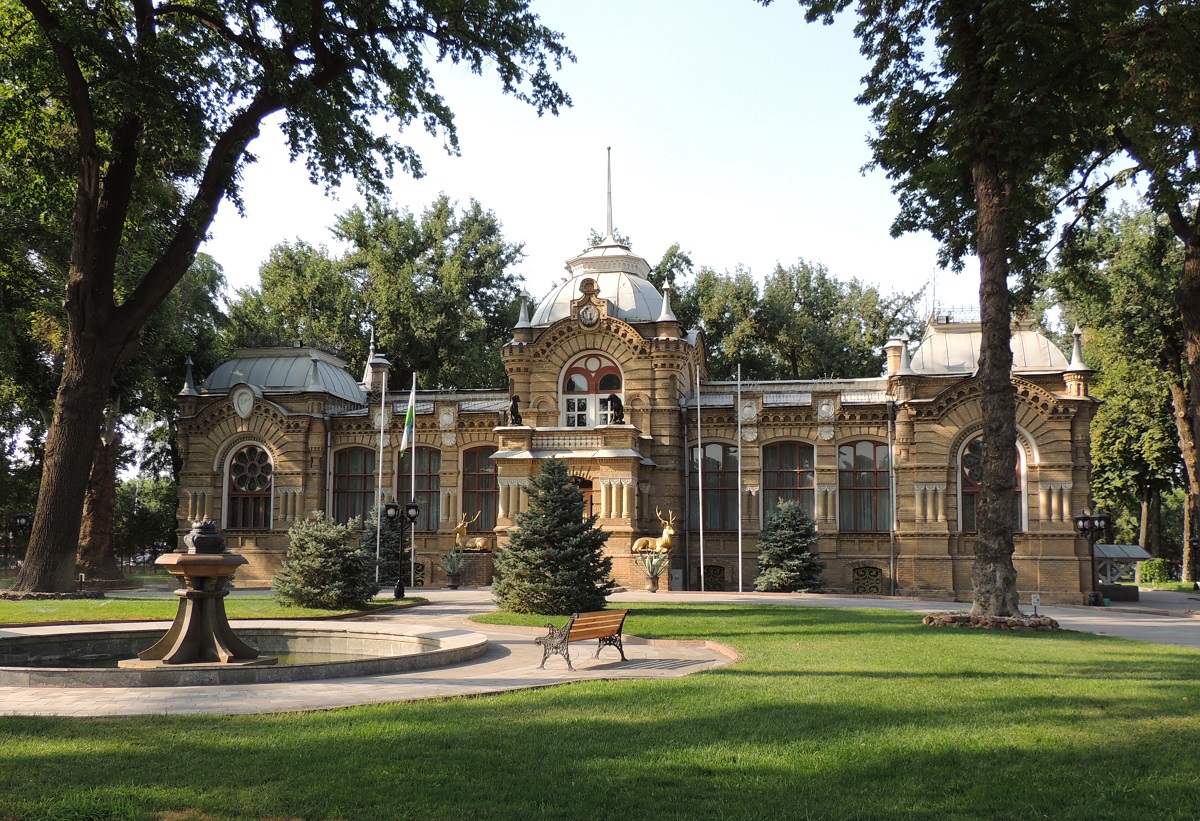
Origins of the city
Bukhara is one of the ancient cities of Central Asia with a history dating back several thousand years in time. Archaeologically, the city can at least date back to the year 500 BC, where there was a settlement on the present Bukhara Ark. However, as an oasis in the desert, Bukhara was already inhabited before this, and it is believed that there were many dwellings along the river Zarafshan. Around the year 700 BC the Sogdian culture emerged, and in the year 500 BC several settlements had been gathered at the Bukhara Ark, where a wall was also established, and thus what became Bukhara arose.
Early and changing rulers
At the beginning of Bukhara, the area was subject to the Persian Empire as a vassal state. Later Macedonian Alexander the Great came in the 300s BC. during his campaign from the Balkans to the east, and Greek culture came naturally enough to make its mark on Bukhara.
In the city there were also temples, and Bukhara was a cult site for worship of the goddess Anahita. Part of that culture was that many pilgrims did this at repeated festivals, and this provided the foundation for the development of the trade that has left a great mark on the city throughout Bukhara’s history. Archaeological finds of the time include gold coins that emphasize Bukhara’s then international trade status.
The Silk Road
Central Asian trade has always been associated with the Silk Road between Europe and China, and following the Chinese Han Dynasty’s securing of the route in the 200s BC. it flourished to new heights.
Bukhara was strategically well situated on the Silk Road, and here a real market emerged that further developed the already wealthy city. The caravans’ trade in silk, not least, grew and gave Bukhara new economic capacity in the coming centuries.
This positive situation lasted until the mid-300s, when Bukhara was subject to a regime of Mongolian tribes. It came down to the recession of Bukhara, which, however, experienced population growth and increased activity in the area from the following century.
Religions
In the 500-600s, several religious directions were represented in Bukhara. It mainly concerned manicism and a form of Christianity.
Muslim armies invaded the Central Asian region of Bukhara around the year 650, bringing with them Islam. As a city, Bukhara was multicultural and multireligious, and neither Islam nor Arab rule prevailed until the mid-700s. Crucial was the Battle of Talas in 751, which made the Arabs rulers of Bukhara. With the Muslim rule, Islam gradually gained ground and became the dominant religion.
The New Capital
After the Battle of Talas, Islam became increasingly dominant, as did the Arabs with whom Islam had joined. That changed in 850 when Bukhara became the capital of the Sami empire with Ismail Samani as the first ruler; one can continue to admire his mausoleum in Bukhara.
With the Sami people came a Persian influence in terms of both culture and language, and Bukhara rivaled Baghdad as the area’s most important city. During the Persian Sami times, Bukhara became the cultural and intellectual center of the Islamic world, and of course its character and development in the city.
In the 9th century, Bukhara was one of the world’s largest cities with a population of about 300,000. Only cities like Baghdad and Cairo had similar size. Prominent Islamists worked from here and, more generally, this was a heyday in Bukhara’s history. The time of the Samanids as rulers ended in 999 with the takeover of the Turkish Karakanids.
New Times
After the era of the Sami, Bukhara became part of the Turkish state of the Karakanids, but that did not slow down the development of the city. It was Aslan Khan, for example, who, as a karakanid ruler, ordered the construction of the famous Kalyan Minaret. The minaret was a contemporary architectural masterpiece.
New times and new leaders emerged over the following centuries, and the best known is the destruction and conquest of Bukhara by Genghis Khan in 1220. The Mongols introduced a new government, which included, among other things, officials from China to secure the administration of the Muslim population in Central Asia.
Genghis Khan’s successors ruled the Mongolian kingdom until the warlord Timur in the 1300s overcame the rule and created his own great kingdom based on nearby Samarkand. Bukhara was conquered in 1363.
Timur created a kingdom that stretched from present-day Turkey to India and from the Arabian Sea to the areas north of Kazakhstan. He was descended from Mongol warriors, and he considered himself a descendant and heir to Genghis Khan.
Timur died in 1405, and his Timurid dynasty ruled the Uzbek area until the beginning of the 16th century. It came as a unified kingdom until Ulugh Bek’s reign. Ulugh Bek was a scientist, and he became king with a focus on learning; which is a visible sign of this he founded three Qur’anic schools, one of which can still be seen in Bukhara. Later, the kingdom was divided, and local rulers came, for example, in Bukhara and Samarkand.
Khanate Bukhara
The new rulers of Bukhara founded a khanate with the center of the old trading town. It was the Uzbek Shaybanid dynasty that ruled, and during, among other things, Abdullah Khan in the second half of the 16th century, Bukhara flourished, where students and scholars joined in large volumes. The arts and literature flourished, and several schools and a prestigious library were established in the city.
The Shaybanids ruled until 1599, when the Janid dynasty came to power. They came from Astrakhan and ruled over the Khanate of Bukhara until 1747.
The Emirate
In 1785, Bukhara emerged as an emirate between the rivers Amu Darya and Syr Darya. Formerly it was called Transoxiana with its capital in Bukhara and the emirate existed until 1920.
The emirate’s development began with local officials, the so-called ataliqs, increasing power in a weakened khanate through the 18th century. One ataliq had great power, such as tutors from the khan’s children, and they took on the real power, while leaving some khanes as puppets before the emirate itself was established.
The Russian Empire expanded through the 19th century, and Central Asia was one of the areas incorporated into the empire’s empire. Bukhara Khanat lost a showdown against Russia in 1868, and Russia conquered the emirate’s territory in the years 1868-1873. The emir on his throne became subject to the czar, and the emirate was even expanded, with the emir’s supporting Russia’s struggles against, for example, Khiva.
During the Russian era, an upturn in the economy came with the Russian trade, and Bukhara became associated with other regions through first the Transcaspic Railway to Krasnovodsk on the Caspian Sea and later via Tashkent to Orenburg in European Russia. Bukhara station was established southeast of the city, and here the Russian administration established the city of Ny Bukhara, which had Russian city plan, housing, church, administration and other belonging to the administration of the area.
New Bukhara had a few thousand inhabitants, while Bukhara itself had a population of about 70,000. Bukhara was surrounded by walls and bastions, and here were many mattresses, mosques and markets. Centrally as a political center in the old city, Bukhara Ark was the residence and offices of the emir.
The last emir
In 1911, emir Mohammed Alim Khan was crowned emir in the coronation hall of the Bukhara Ark, and it was to become the last coronation in the history of the emirate. Mohammed Alim Khan wanted to maintain his power and the opposition in the emirate joined the Soviet Bolsheviks in the wake of the Russian Revolution. In 1918, communist supporters announced that the city was ready to support the Bolsheviks against the conservative emir.
The Bolshevik army marched to Bukhara’s gates and demanded surrender, but the emir defended the emirate and Bukhara, which in itself had never been seriously annexed by Russia. This was done by allowing the Russian delegation to execute, destroying installations such as the railroad against Soviet-controlled Samarkand and generally launching a holy war against all Russian.
The Soviet army retreated to Samarkand, but for the emir it was a deadline. On August 16, 1920, the Bolsheviks decided to overthrow Bukhara’s emir, and just 12 days later the city attacked. It came to hard fighting, with the Soviet army led by Mikhail Frunze superior to the emir. After four days of fighting, the emir’s palace was destroyed and the red flag was hoisted in the Kalyan Minaret, the symbol of Bukhara. The Emir fled to Afghanistan, and the same year, Bukhara’s People’s Soviet Republic was established.
Soviet Union to Today
In 1925, the former emirate was admitted to the Soviet Socialist Republic of Uzbekistan, and thus the area was integrated into the Soviet Union, which was replaced by an independent Uzbekistan in 1991.
During the Soviet era, Bukhara and the area around the city were developed with new neighborhoods, agricultural production and other things that industrialized the city. Immediately south of Bukhara’s Old Town, the new Soviet city was planned with wide streets, large squares, a statue of Lenin’s head of state and large public buildings such as administration and housing blocks in the growing city.
Bukhara is a desert city, and during the Soviet Union, much of the dry land was cultivated through irrigation. Cotton production increased significantly, which is still seen in the areas around the city.
Major restoration works were initiated during the Soviet era, and these have been continued under independent Uzbekistan, which continues to invest in the city. This is done, for example, in new motorways and the continuation of the high-speed Afrosiyob train from Samarkand to Bukhara.
Overview of Bukhara
The city of Bukhara is one of the highlights of the historic Silk Road that linked Europe with Asia. The trade routes passed through Central Asia, and Bukhara was one of the most important cities on the route through present-day Uzbekistan. To this day you can enjoy a lot of the Silk Road history in the magnificent sights in the city center.
Bukhara is located in the middle of the desert, and out of almost nowhere a beautiful city rises, where some of the world’s most beautiful Islamic buildings can be seen. The silhouette consists of not least the Kalyan Minaret as a landmark with a number of the distinctive light blue domes surrounding it. The domes and other architectural highlights of the city are mainly religious works such as mosques, minarets and madrasas.
About the upcoming Bukhara travel guide
About the travel guide
The Bukhara travel guide gives you an overview of the sights and activities of the Uzbek city. Read about top sights and other sights, and get a tour guide with tour suggestions and detailed descriptions of all the city’s most important churches, monuments, mansions, museums, etc.
Bukhara is waiting for you, and at vamados.com you can also find cheap flights and great deals on hotels for your trip. You just select your travel dates and then you get flight and accommodation suggestions in and around the city.
Read more about Bukhara and Uzbekistan
Buy the travel guide
Click the “Add to Cart” button to purchase the travel guide. After that you will come to the payment, where you enter the purchase and payment information. Upon payment of the travel guide, you will immediately receive a receipt with a link to download your purchase. You can download the travel guide immediately or use the download link in the email later.
Use the travel guide
When you buy the travel guide to Bukhara you get the book online so you can have it on your phone, tablet or computer – and of course you can choose to print it. Use the maps and tour suggestions and you will have a good and content-rich journey.
Fine Architecture • Bukhara Ark • Mighty Walls • Beautiful Mosques
Overview of Bukhara
The city of Bukhara is one of the highlights of the historic Silk Road that linked Europe with Asia. The trade routes passed through Central Asia, and Bukhara was one of the most important cities on the route through present-day Uzbekistan. To this day you can enjoy a lot of the Silk Road history in the magnificent sights in the city center.
Bukhara is located in the middle of the desert, and out of almost nowhere a beautiful city rises, where some of the world’s most beautiful Islamic buildings can be seen. The silhouette consists of not least the Kalyan Minaret as a landmark with a number of the distinctive light blue domes surrounding it. The domes and other architectural highlights of the city are mainly religious works such as mosques, minarets and madrasas.
About the upcoming Bukhara travel guide
About the travel guide
The Bukhara travel guide gives you an overview of the sights and activities of the Uzbek city. Read about top sights and other sights, and get a tour guide with tour suggestions and detailed descriptions of all the city’s most important churches, monuments, mansions, museums, etc.
Bukhara is waiting for you, and at vamados.com you can also find cheap flights and great deals on hotels for your trip. You just select your travel dates and then you get flight and accommodation suggestions in and around the city.
Read more about Bukhara and Uzbekistan
Buy the travel guide
Click the “Add to Cart” button to purchase the travel guide. After that you will come to the payment, where you enter the purchase and payment information. Upon payment of the travel guide, you will immediately receive a receipt with a link to download your purchase. You can download the travel guide immediately or use the download link in the email later.
Use the travel guide
When you buy the travel guide to Bukhara you get the book online so you can have it on your phone, tablet or computer – and of course you can choose to print it. Use the maps and tour suggestions and you will have a good and content-rich journey.





Similar to Bukhara Travel Guide
There are no listings matching your search.
Reset